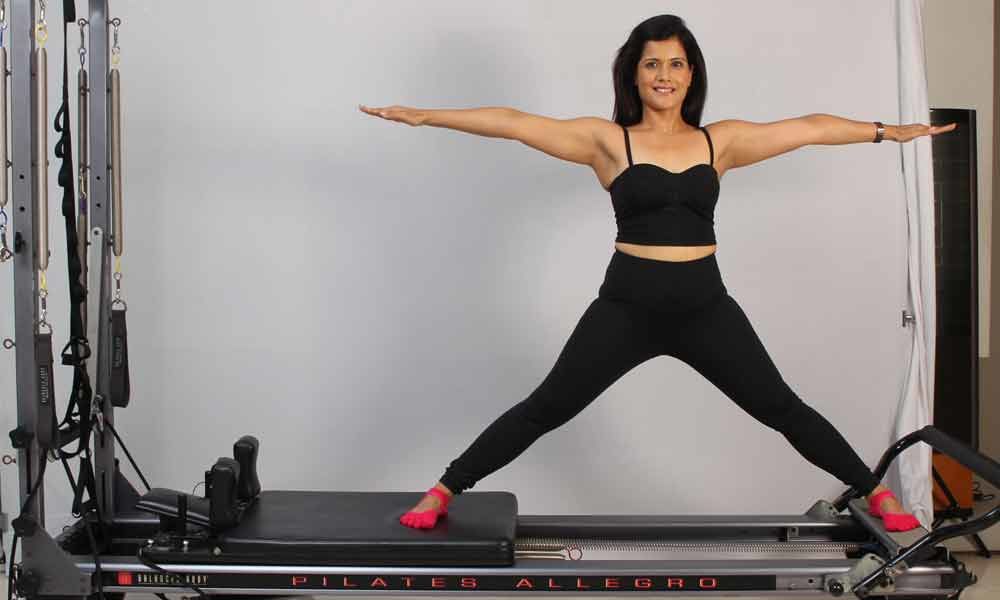Pilates – All you need to know

Pilates, envisioned in the 1920s by German-born Joseph Pilates, is today an extremely popular form of physical fitness by people from all walks of life.
Pilates, envisioned in the 1920s by German-born Joseph Pilates, is today an extremely popular form of physical fitness by people from all walks of life.
These exercises can be done either on a mat or on specialised equipment like the Reformer, Cadillac, Wunda chair etc.
This apparatus comprising straps and handles, pulleys and springs can be employed to provide either resistance or support as per individual need.
The primary aim of Pilates is to stretch and strengthen the body using a variety of techniques. It also lays emphasis on achieving a sound mind-body balance.
Some principles used in Pilates to condition the body are proper alignment, centering, concentration, precision, breathing and flow movement.Pilates can also be used as an adjunct to weight training, yoga and other forms of physical fitness.
Often it is used as a fruitful way of rehabilitation to strengthen and recover.
Physical fitness is only one part of the strategy to achieve a fit body – the other parts of diet and nutrition are equally if not more important.
With a plethora of information available, it can get daunting to decide which diet to follow.
Sheetal Shah, a go-to Pilates trainer, of Core Pilates Studio in Worli, has been practising and teaching this form for seven years now. She shares ideal diet structure while practising Pilates.
What should one eat before and after Pilates?
Pilates involves moves that are all concentrated in your center or core.
Also, your legs are sent overhead in many positions hence big meals beforehand are not recommended. However, it is not recommended to work out on an empty stomach either.
If you work out on an empty stomach, it leads to muscle loss. Loss of muscle mass causes your metabolism to drop, making it much harder to lose weight.
Pre Pilates snacks or meals must have lean proteins, complex carbs and a small portion of healthy fats.Doing a full set of The Hundred and other abdominal exercises after a heavy meal are going to make you feel terribly uncomfortable.
Pilates is all about 'hollowing' and 'scooping' your abdominals hence you may feel downright ill if you exercise after a heavy meal.
So, make sure whatever you eat, it's a small portion and fairly light.
Foods to avoid before and after Pilates?
Before:
♦ Any food that causes wind, onions, garlic, beans, lentils, oily fish, cauliflower, cabbage and sprouts.
♦ Too much fruit can cause fermentation in the gut that can cause wind.
♦ Avoid anything too heavy that takes a long time to digest such as red meat or heavy carbs
♦ Avoid high sugar, high carbs food as these are likely to cause a spike and subsequent crash in blood sugar levels
After:
Post Pilates —- can go for more substantial depending on the time of the day go for a meal that contains quality low GI carbohydrates, protein and good fats.
♦ Wholemeal wrap with hummus, beans and salad greens
♦ Porridge
♦ Poached eggs on grainy toast
♦ Lean meat and salad sandwich
♦ Quinoa salad or stir fry
♦ Soup with the piece of super grainy bread
♦ Most importantly don't forget to drink plain, clean water before, during and after Pilates. Avoid sugary drinks.
How many hours or minutes the food can be consumed before and after doing Pilates?
A mini snack should be 30- 45 mins before class and heavy meal one hour before Pilates session.
Great suggestions are as follows:
♦ Healthy nut mix
♦ Banana or anyone fruit with peanut butter
♦ Low-fat yoghurt or greek yoghurt
♦ Hard egg boiled
♦ Egg white scrambled or omelette
♦ Green smoothie
♦ Hummus with carrots or celery
♦ slice of grainy toast with tomato or avocado














